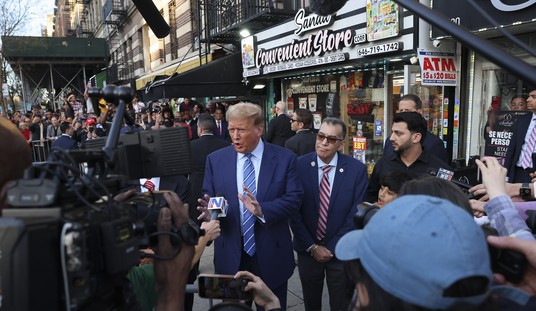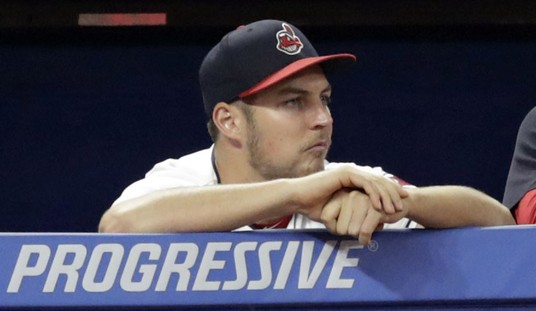The artist Robert Rauschenberg died on Monday, age 82, at his home in Florida. The Hosannas were loud and predictable. Michael Kimmelman, chief art critic for The New York Times, spoke for the terminally infatuated when he praised Rauschenberg as an artist who “time and again reshaped art in the 20th century,” whose work “gave new meaning to sculpture,” and whose promiscuous dabblings “defied the traditional idea that an artist stick to one medium or style.” (Unlike, for example, Leonardo da Vinci, who painted, sculpted, designed buildings, composed music, did serious mathematical, engineering, and scientific work.)
Kimmelman and his fellow cheer leaders are following over themselves to praise Ruaschenberg’s inventiveness and creativity. But what, really, does his art add up to? I went to a huge retrospective of Rauschenberg’s work in New York in the late 1990s. You started at the Guggenheim Museum at Fifth Avenue and Eighty-ninth Street, where hundreds of objects made or at least signed by Rauschenberg were arranged in roughly chronological order, from the beginning of Rauschenberg’s career in the early 1950s up to about fifteen minutes before the exhibition open. You then trekked downtown to the Guggenheim’s SoHo old outpost at Broadway and Prince Street, where Rauschenberg’s technology-based and multimedia works were on view, along with more paintings, sculptures, collages, and “combines” from the previous year or two. Then one traveled across town to Spring and Hudson Streets, where the Guggenheim Museum at Ace Gallery was showing The 1/4 Mile or 2 Furlong Piece, a work in progress that began in 1981 and, when I saw it, consisted of 189 parts that consumed some 1000 feet of wall and floor space.
After making these rounds, a friend and I wearily decanted ourselves into a taxi and headed back uptown. We were stopped at a traffic light when a car pulled up beside us and an Airedale in the backseat began barking furiously through a half-opened window. When I turned to look at the dog, he suddenly stopped barking, yawned broadly, and lay down. “He doesn’t know whether to bark or yawn,” my friend observed. Which more or less sums up my reaction to that biggest-ever travelling road show of works by Robert Rauschenberg.
There are worse things celebrated as great art today: things, anyway, that are more aggressively repellent. But I cannot remember an exhibition that left such a melancholy aftertaste. A press release claimed that, in his nearly fifty-year career, “Robert Rauschenberg has redefined the art of our time.” (Michael Kimmelman must have read that press release.) There is, alas, a sense in which this is true. Not that there is anything original or innovative about Rauschenberg’s art. On the contrary, his work is primarily a highly commercial version of what Marcel Duchamp was doing in the Teens and Twenties with his “ready-mades.” In essence, it is a window-dresser’s version of Dada: Dada (slightly) prettified and turned into a formula–Dada, in short, for the masses.
Like Andy Warhol, Rauschenberg’s chief genius has been for celebrity. His works are props in a gigantic publicity campaign whose purpose is to foster a species of brand-name recognition. In Rauschenberg’s case, the brand in question is generic: it’s art-in-general. What we are meant to admire is not the aesthetic achievement of Rauschenberg’s work–that, indeed, is a question that scarcely arises–but rather the fact that it somehow managed to achieve the status of art in the first place. Like Dr. Johnson’s dog prancing on its hind legs, it’s not how well it performs but the fact that it performs that way at all that inspires wonder.
Writing in 1967, the American critic Clement Greenberg noted that many contemporary artists were exploiting “the shrinking of the area in which things can now safely be non-art.” Rauschenberg, whom Greenberg described as a “proto-Pop” artist, again and again proved himself extraordinarily adroit at this game, ready at a moment’s notice with an old bathtub, a crumpled cardboard box, a wooden frame filled with dirt and mold, or simply a blank canvas to offer an eager art market. All of which is to say that by the time Rauschenberg came on the scene the area that could “safely be non-art” had already been collapsed nearly to zero. Rauschenberg’s talent–again like Warhol’s (and like that of his early collaborator Jasper Johns)–was to look back on this collapse with a knowing, eminently packageable smirk.
Much of the smirk, especially in Rauschenberg’s early work, was directed at the art of his older contemporaries. This is part of what made Rauschenberg such a hit among intellectuals, for whom the spectacle of artistic self-reference is irresistible. It reminds them, just barely, of having discovered something. Rauschenberg offers them a battered wooden box into which he has hammered a bunch of rusty nails and tossed a few pebbles: they think “Joseph Cornell, sort of,” and are happy.
You can tell a lot about Rauschenberg’s work simply from its list of ingredients. Consider Monogram (1955-59), which the Moderna Museet in Stockholm actually paid good money to acquire. This typical “Combine,” greatly admired by Kimmelman, consists of oil paint, paper, fabric, printed paper, printed reproductions, metal, wood, rubber shoe heel, and tennis ballon canvas, with oil paint on an Angora goat (stuffed) wearing an automobile tire and standing on a wooden platform mounted on four casters. It’s almost enough to make one sympathize with the animal-rights fruitcakes. (It certainly makes one sympathize with the museum conservators charged with “preserving” this stuff.)
There’s a character in Dickens’s Our Mutual Friend known as “the golden dustman,” a chap who made his fortune trawling through garbage heaps. Rauschenberg is a kind of golden dustman. At least, an exhibition of his work reminds one of nothing so much as a visit to a gigantic dustbin or junk yard, and one that magically coins vast sums of money. It will be objected that there is nothing unusual about this: that many, maybe most, of the more glamorous precincts of the contemporary art world are every bit as trashy as those inhabited by Robert Rauschenberg. I readily concede the point. But there is something special about Rauschenberg. It has partly to do with longevity–Rauschenberg was around the art world for a very long time–partly with his facileness. What Rauschenberg produced was undoubtedly junk, but he managed to produce a mighty impressive mound of it and he did so with buoyant insouciance.
Over the years, Rauschenberg won just about every award and honor a cynical art world and gullible public can confer. In 1976, he made the cover of Time magazine, which presented a picture of the beaming artist, in open shirt and sunglasses, with the legend “The Joy of Art.” What it should have said was “The Joy of Artist.” That at least would have been credible.
It’s was the combination of celebration and unremitting trashiness that finally made that retrospective of Rauschenberg’s art unbearably depressing. If Robert Rauschenberg can be said to have “redefined the art of our time,” it is because of the steady pressure that the growing embrace and exaltation of his work has exerted on contemporary taste. As one walked along the ramp of Frank Lloyd Wright’s expanding spiral at the Guggenheim, one followed the course of Rauschenberg’s career from 1949 until the late 1990s. Along the way, there was no aspect of contemporary artistic culture that is not mocked, trivialized, or turned into some sort of joke. The only exceptions were the ghostly exposed blueprints that Rauschenberg did in 1950 in collaboration with his then wife, the artist Susan Weil. These were the only two works, out of several hundred on view, that communicated any genuine aesthetic emotion. But these works were said to have been Susan Weil’s idea, and they served chiefly to highlight the poverty of everything that surrounded them.








Join the conversation as a VIP Member